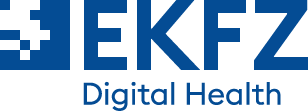
Proof-of-Concept for a sensor system enabling body posture correction during physiotherapy exercises
Medical Need
Almost two thirds of the German population complains of back pain, with one fifth even being affected by chronic, almost daily pain. The musculoskeletal disorders that often lie behind this cause up to 10 billion euros in annual medical costs in Germany. In 2020 around 4.5 million patients received a total of 83.4 million physiotherapeutic treatments due to such back problems. With that, physiotherapy in particular is one of the most personnel intensive areas of medical care in Germany. The risk of opening up a huge gap in care seems almost inevitable regarding the fact that by 2035 nearly 40 percent of Germany’s rural areas will be underserved of healthcare services.
The aim of this project is to develop a robust sensor system which digitizes the physiotherapeutic skill in order to guide patients into the right movement thorugh vibrotactile feedback and evaluate its assistance for hands-off training on the three most demanding clinical use cases.
Vibrotactile Feedback, Motion Guidance, Digital Physiotherapy, Back Pain
Project team members
Clinician
University Comprehensive Spine Center (UCSC), University Center of Orthopedic, Trauma and Plastic Surgery, University Hospital Carl Gustav Carus at TU Dresden
Project team members
High-Tech
Technische Universität Dresden, Faculty of Mechanical Engineering, Chair of Industrial Design Engineering (TD)
- Prof. Dr.-Ing. Jens Krzywinski
- Stefan Teubner
- Lisa-Marie Lüneburg
- Willy Beyer
Technische Universität Dresden, Faculty of Electrical and Computer Engineering, Institute of Biomedical Engineering (IBMT)
Abstract
Despite rising healthcare demands, by 2035 nearly 40 percent of Germany’s rural areas will be underserved of healthcare services. Physiotherapy in particular is one of the most personnelintensive areas of medical care in Germany, with over 80 million treatments per year. The risk of opening up a huge gap in care in this aspect seems almost inevitable.
The interdisciplinary project veiioSense wants to tackle this challenge by developing a robust vibrotactile feedback loop as part of a digital physiotherapy assistant, which supports the patient through a smart wearable. Clinical Scientists and High Tech talents will collaborate to set the conditions and requirements of such a system for three use cases: low back-pain, spinal trauma and thoracolumbar spinal metastases. In all three use cases, the effect of such a system on patient’s pain level, living quality as well as qualitiy of exercising will be investigated. This project results into a proof of concept for an IOMT device that empowers patients to lead an active lifestyle, increasing the appeal of conservative therapy while maintaining compliance.

